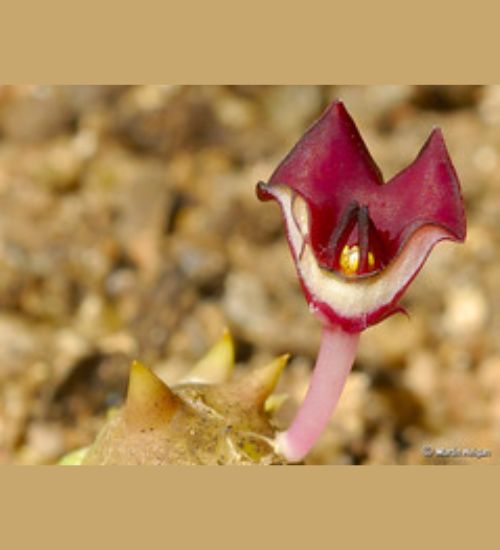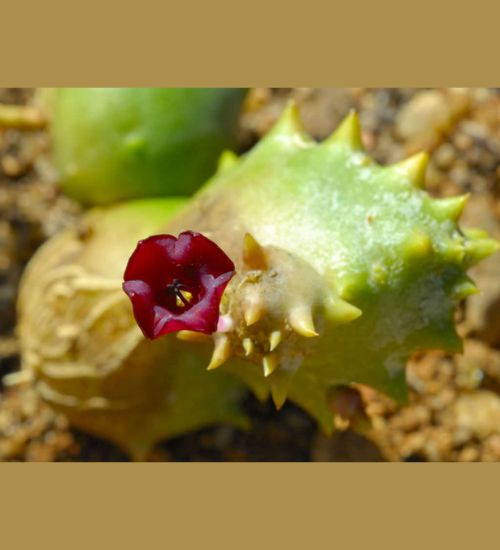Sun: Full sun to partial sun
Water: Typical water needs for a succulent
Temperature: Zone 11a from 40° F to 45° F (4.4 ° C to 7.2° C) to Zone 11b from 45° F to 50° F (7.2° C to 10° C)
Winter Survival: Not cold hardy
Propagation: stem cuttings, seeds
Flower: in the summer
Flower Type: dark purple
Toxic: Unknown - Tell us
Dormant: Unknown - Tell us
Space Requirement: Outdoors
Common Problems: Plants may rot if overwatered, Fungal diseases, pests
Basc Care for Stapeliopsis Pillansii
Watering
Regular watering period should be every 2 weeks
You can water your succulent more than often in extreme conditions but make sure that the soil is completely dry before watering your succulent again.
Fertilizing
Only feed this succulent during its active growing seasons which means Unknown - Tell us. Use the right fertilizer applied in the right amounts. Applying half-strength balanced fertilizer every month or so is recommended for optimal results.
Do not fertilize during Unknown - Tell us as the plant is dormant.
Sun & Location Requirements for "Stapeliopsis Pillansii"
Stapeliopsis Pillansii needs full sun to partial sun in order to thrive. Aim for 6 hours of direct sunlight each day, and adjust depending on the season and your climate. If you don't have an outdoor spot that receives sufficient light, consider placing your succulent near a south-facing window all year round.
As per this succulent profile, it is only able to stay healthy when the environment temperature is above the range of zone 11a from 40° F to 45° F (4.4 ° C to 7.2° C).
When temperatures drop below freezing, it is important to take precautions to protect Stapeliopsis Pillansii from the cold. Insulating and providing adequate drainage for the plant are key elements in helping it survive winter weather. Wind and sun exposure should also be minimized to prevent frost damage.
Any succulents in the group will need a large space to grow. You should place your pot outdoor. Since this plant needs a lot of space than other succulents, you should consider not planting them together with other succulents/plants.
Propagation
Propagating Stapeliopsis Pillansii by stem cuttings is an easy and fun way to increase your collection of these unique houseplants. When propagating, it’s important to choose healthy stems from existing plants that are at least two inches long and have several leaves attached.
Growing Stapeliopsis Pillansii from seeds is an easy and economical way to produce more plants. Identify a healthy seed by its plumpness, dark color and slightly sticky texture. Once the potting mix has been pre-mixed with well-draining soil, sow the seeds evenly and press lightly into the surface. To ensure germination, keep the container in bright but indirect light and mist the soil gently with a spray bottle.
Toxicity

Pests and Diseases
Stapeliopsis Pillansii can be affected common pests and diseases like most of the other succulents such as mealybugs.
If you do spot any of pest signs, you can treat your succulent using below methods.
- Mealybugs: quarantine, clean infected plants, soapy water.
Besides that, to prevent serious health issues from happening, keep your succulent in a well-ventilated area and check it regularly for any signs of pests or health problems.


